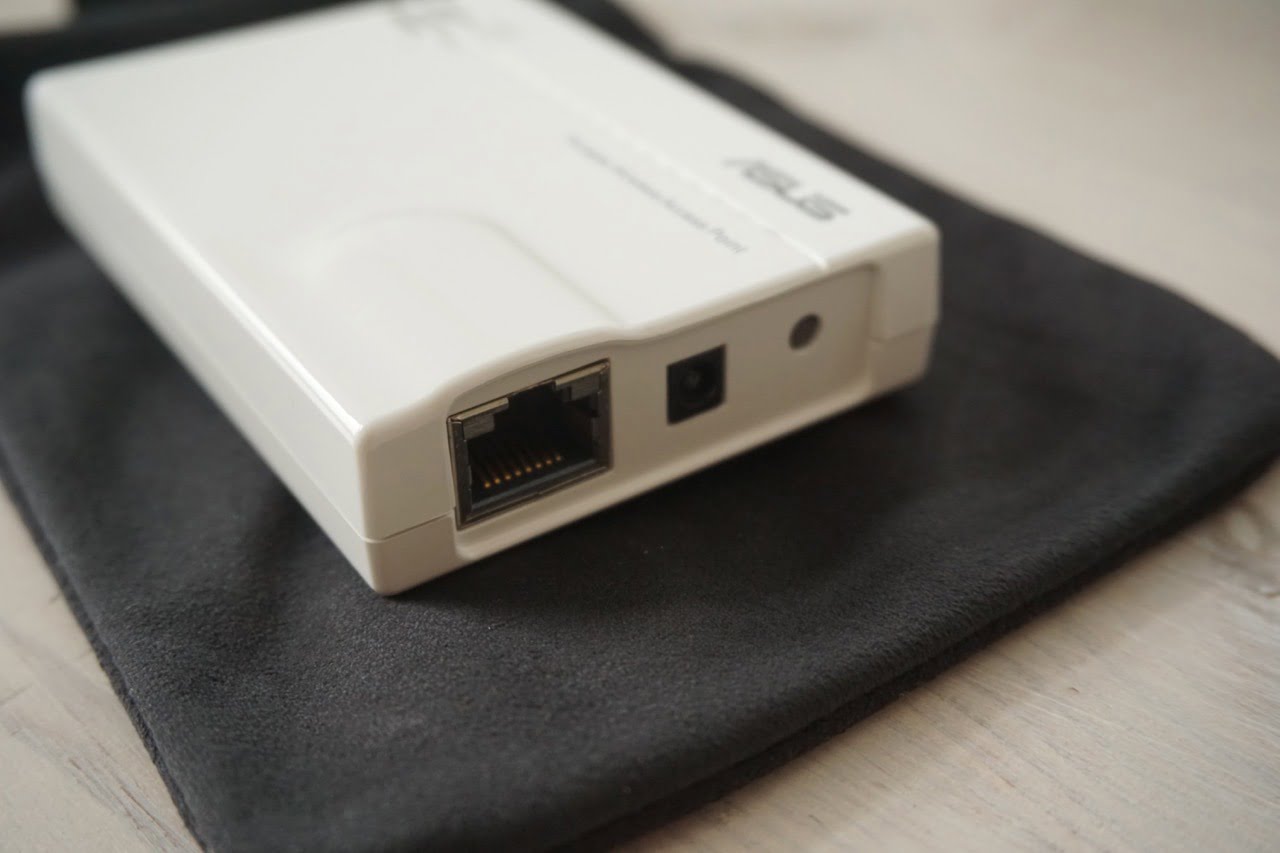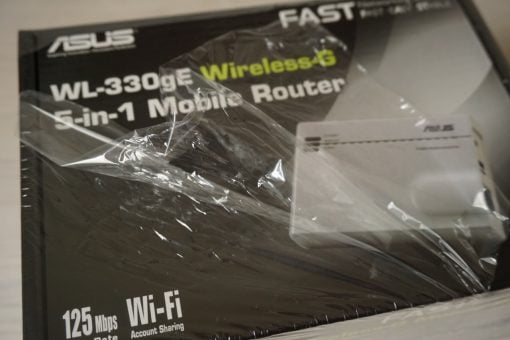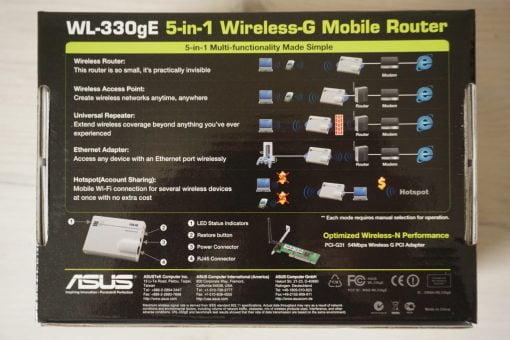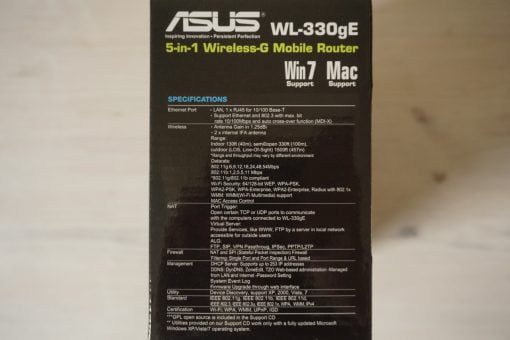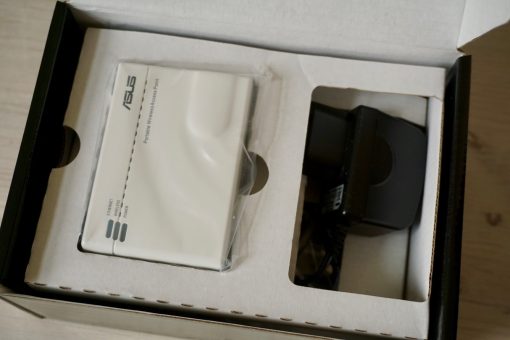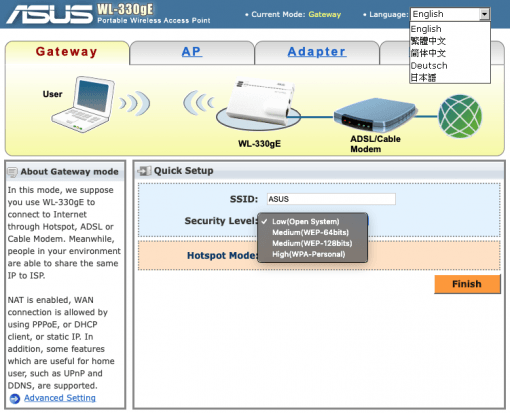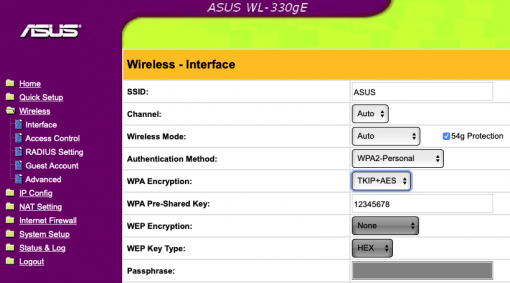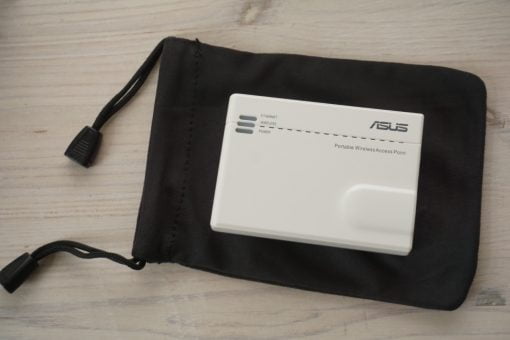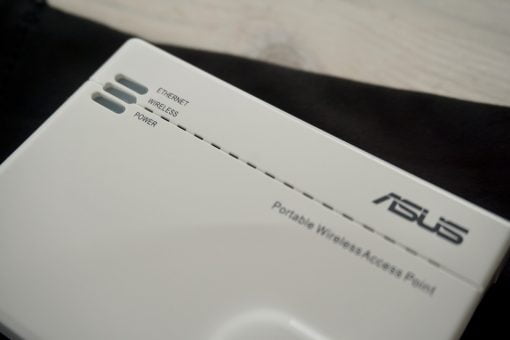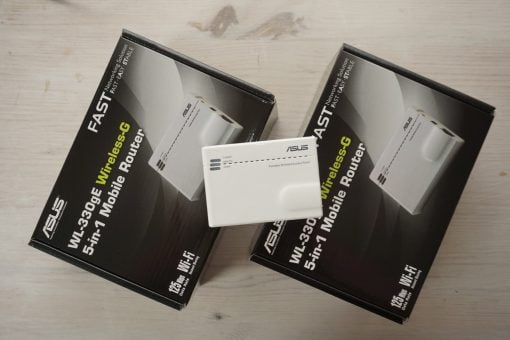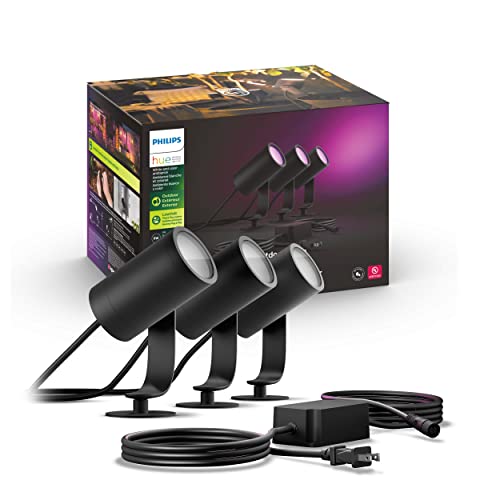Today a little retro review of an Asus WL-330gE that is almost ten years old.
How do you come up with that? By finding “New old stock” of this model, i.e. specimens that are still in their original packaging and have never been unpacked. In this case we found a WL-330gE from Asus.
The journey into the past begins with removing the original foil from the carton. Inside, we get an impression of what it was like to buy an electronic device many years ago: besides the snow-white router and its black power supply, we also find a printed manual in a box, which almost resembles a small book, as well as a fluffy storage bag for on the way and a cable that translates from USB to the jack plug, so that even a normal USB port can serve as a power source. There is also a short network cable on board as well as a CD with the complete operating instructions.
The Asus WL-330gE already offered the options router, access point, repeater and Ethernet adapter (for devices that cannot use WLAN) and is quite small and very light. The design still looks good, you can’t tell from the small device that it was produced in 2011.
The software interface is very easy to use for the mentioned functions. It’s clear which function to choose and what else to set. The further, more in-depth functions such as WLAN name, password etc. are accessible on a further level, which is also well structured. A little annoying is only the fact that the simple welcome screen and the detail settings are designed completely different.
The performance of this 54g router with Asus firmware is good, we were able to push well over 20 Mbit/s net through the air. On board is a Broadcom BCM5354 as well as 4 MB Flash and 16 MB RAM. That’s not too much now, but it’s enough to use the router even today. Since the software is very outdated and there is now also the KRACK security hole in WLANs, we have decided to equip the small Asus with DD-WRT – here you can read how it works. With this we are software-wise up to date again and also the WLAN is secure again. The only disadvantage: the WLAN performance dropped to about half of our level. Since the use of the small Asus nowadays would rather depend on having WLAN somewhere at all or using it for a handicraft project, that would be of little importance, because after all the old hardware is still fully usable.
If you’re looking for such a small travel router, you’ll find what you’re looking for at TP-Link today: the device is square but just as small and light, of course, with the latest radio technology on board. One model can even offer ac-WLAN. And the price is also manageable: you shouldn’t have to spend more than twenty to thirty dollars.
But what do we do if we happen to have found two WL-300gE units? We build a WLAN cable that you can use for many purposes. And no, this is no joke, but an extremely practical configuration of two routers using DD-WRT. You can find the complete tutorial here.
Buy on Amazon: TP-Link Travel Router
